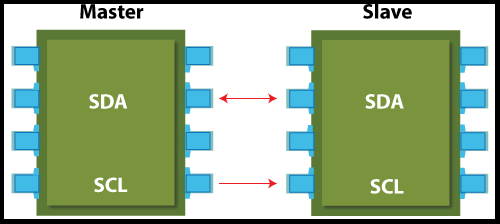I2C ProtocolThe I2C stands for the inter integrated controller. The I2C protocol is a serial communication protocol that is used to connect low-speed devices. For example, EEPROMs, microcontrollers, A/D and D/A converters, and input/output interfaces. It was developed by Philips semiconductor in 1980 for inter-chip communication. Almost all major IC manufacturers now use it. It is a master-slave communication in which you can connect and control multiple slaves from a single master. In this, each slave device has a particular address. It supports various data rates according to versions ranging from 100 Kbps, 400 Kbps, 1 Mbps to 3.4 Mbps. It is synchronous communication like SPI. I2C interfaceI2C protocol uses only two cables for the communication in which one cable is used for the data (SDA), and another cable is used for clock (SCL). Both cables are required to pull up with a resistor for + Vdd. It can be used to link two I2C buses with different voltages. 
Applications of I2CIt is the best choice for those applications that require less costly and easy implementation rather than high-speed.
Advantages of I2CThere are the following advantages:
Disadvantages of I2C
Difference between the I2C and SPI protocol.
Next TopicSliding Window Protocol
|
 For Videos Join Our Youtube Channel: Join Now
For Videos Join Our Youtube Channel: Join Now
Feedback
- Send your Feedback to [email protected]
Help Others, Please Share










